UNIT 2: Cell Structure and Function
1/64
There's no tags or description
Looks like no tags are added yet.
Name | Mastery | Learn | Test | Matching | Spaced |
|---|
No study sessions yet.
65 Terms
Cellular components universal to ALL cells
Genome(inside of mRNA, genetic code) and ribosomes
Ribosome structure
Two subunits made of ribosomal RNA and proteins; can be free in cytosol or bound to ER
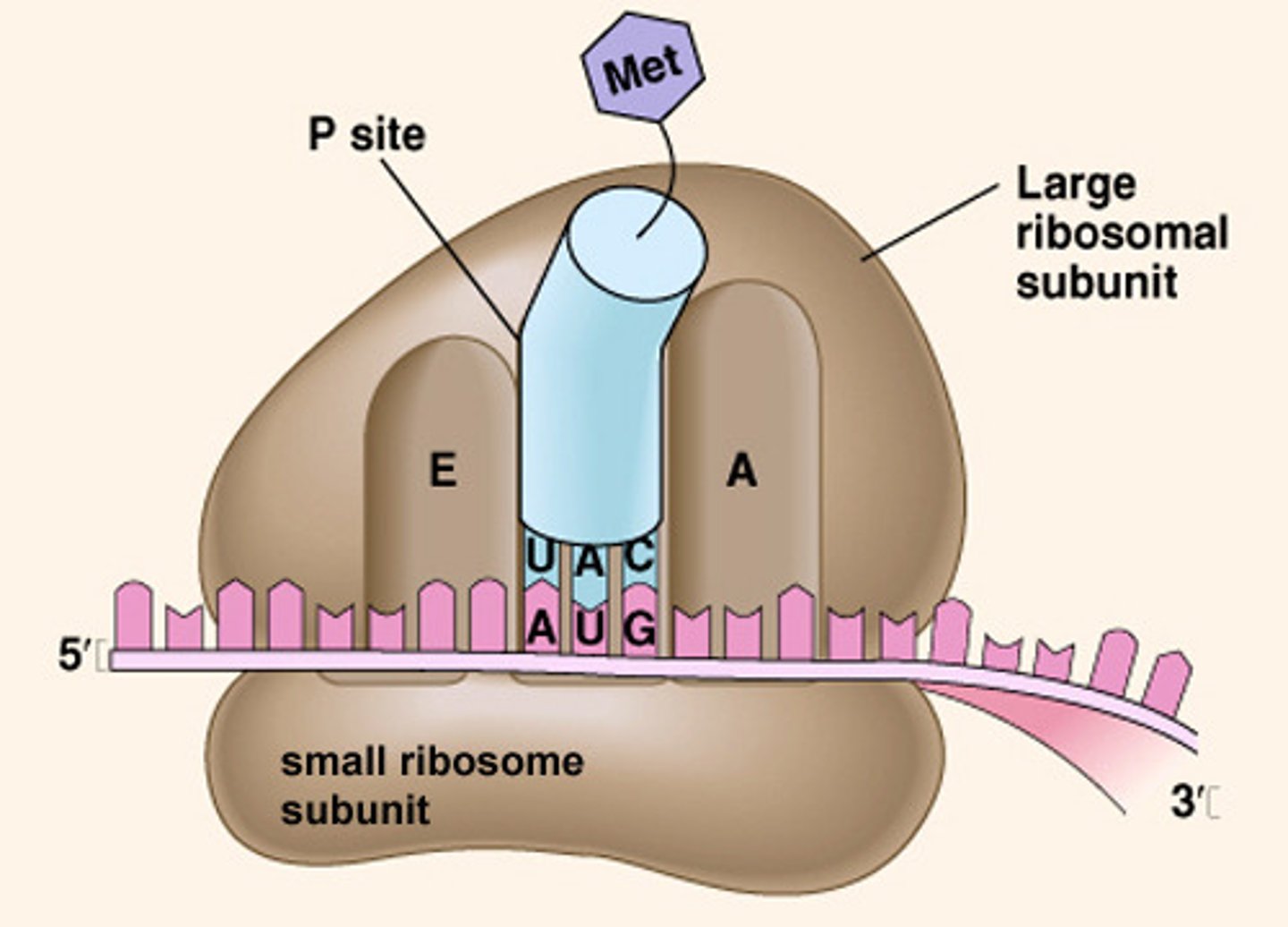
Ribosome function
The 2 subunits come together to during translation to synthesize proteins from mRNA.
Endoplasmic Reticulum structure
Extensive network of membrane-bounded tubules and sacs; membrane separates lumen from cytosol; continuous with nuclear envelope
Smooth ER structure and function
Structure: Several lipid bilayers with space inside that allows it to be different
Function: detoxification of toxic wastes +lipid synthesis

Rough ER structure and function
Structure: Several lipid bilayers with space inside that allows it to be different w/ ribosomes
Function: Have ribosomes on it to transport membrane proteins made by the ribosomes.

Vacuole structure
Membrane bound storage sacs, generally one large in plant cells.
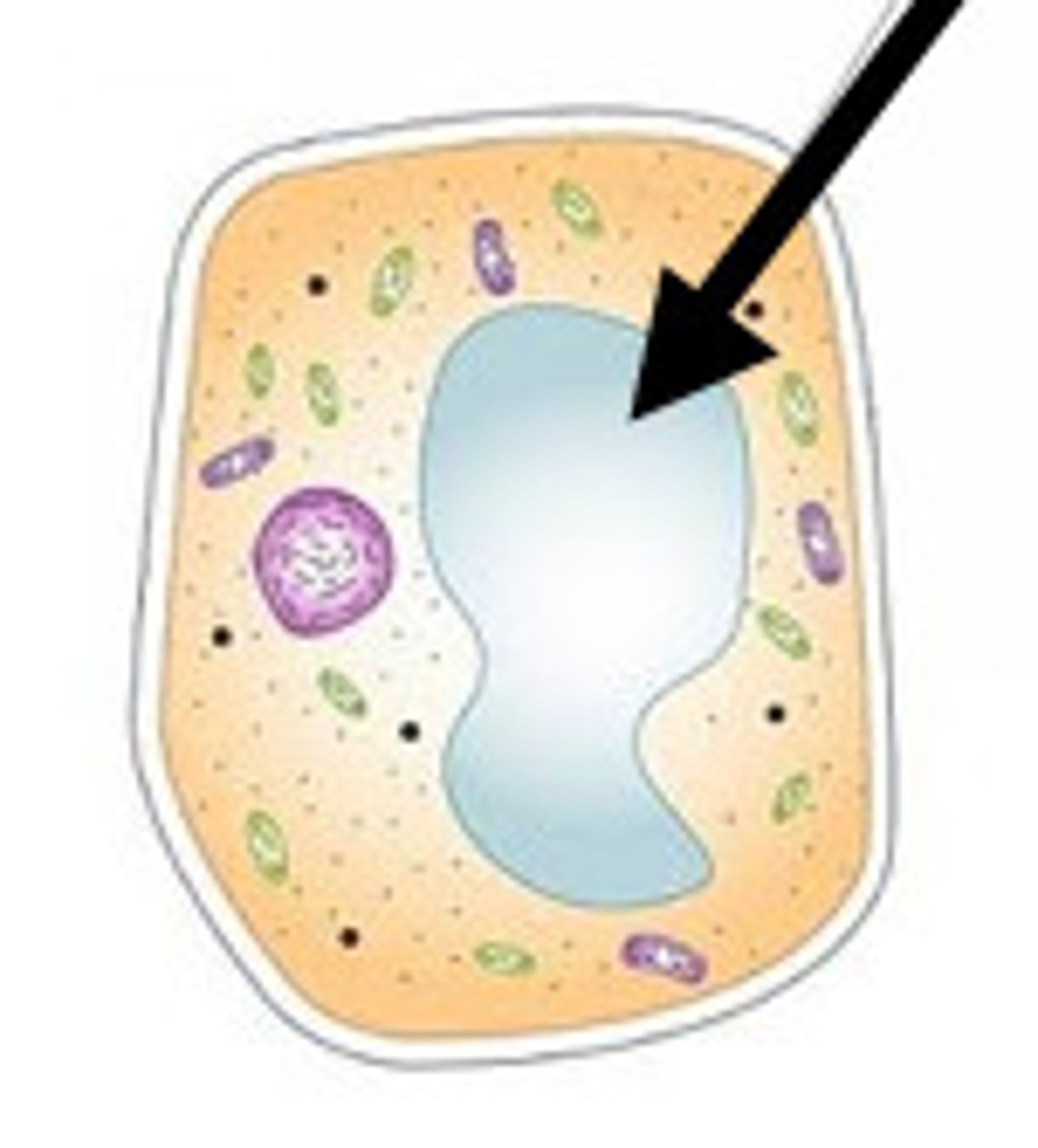
Vacuole function
Storage of water and biomolecules, release of cell waste through exocytosis=> fuses with cell membrane to expel waste products.
Golgi Complex/Apparatus structure
• consists of several disk-shaped cisternae (saccules) arranged in a stack
• organized functionally into cis, medial & trans faces
• has a distinct polarity across the stack
molecules flow from cis face and leave to trans-face.
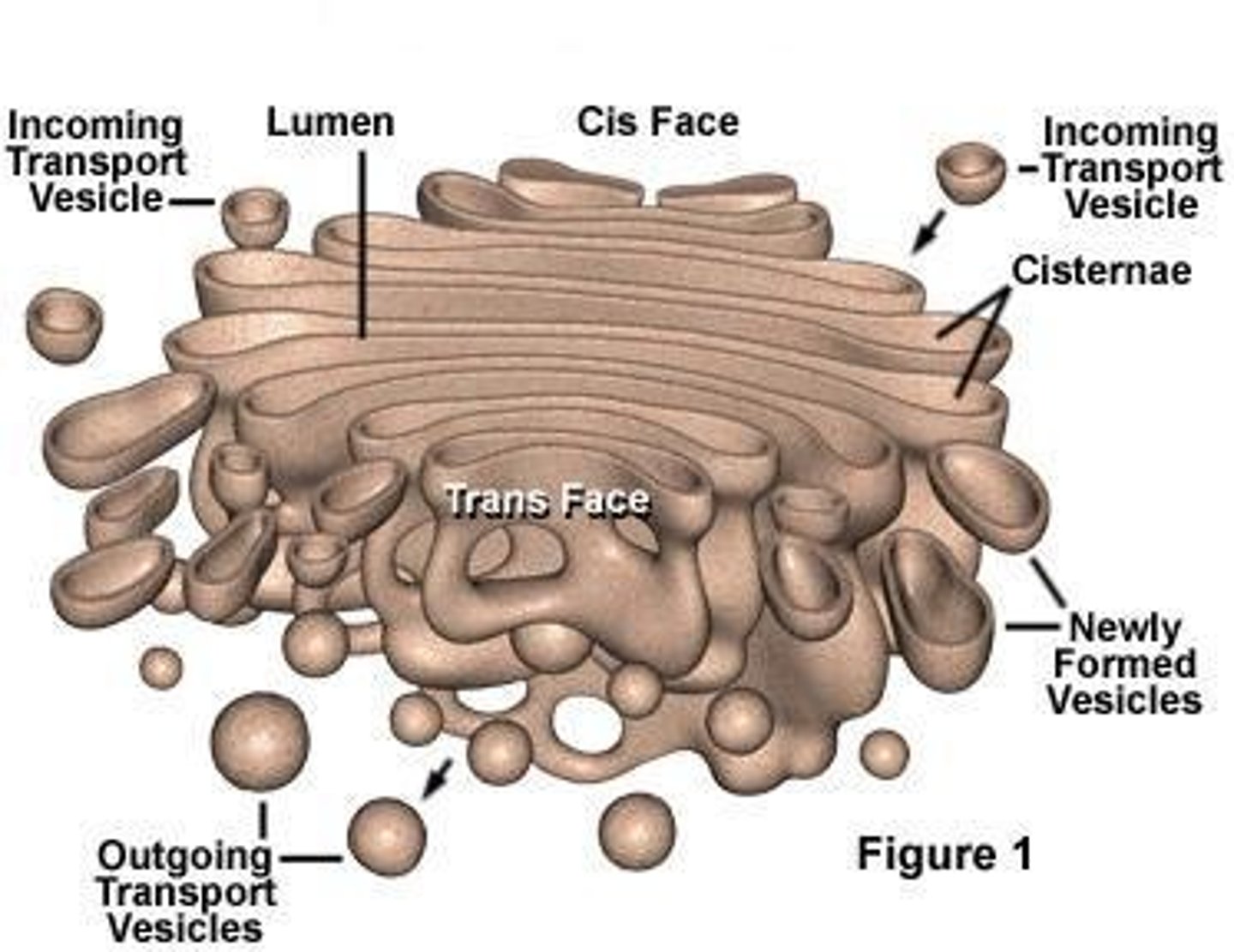
Golgi Complex/Apparatus function
involved with the correct folding/chemical modification of proteins.
Packaging, modification, and transport.
Vesicles
small membrane sacs that specialize in moving products into, out of, and within a cell
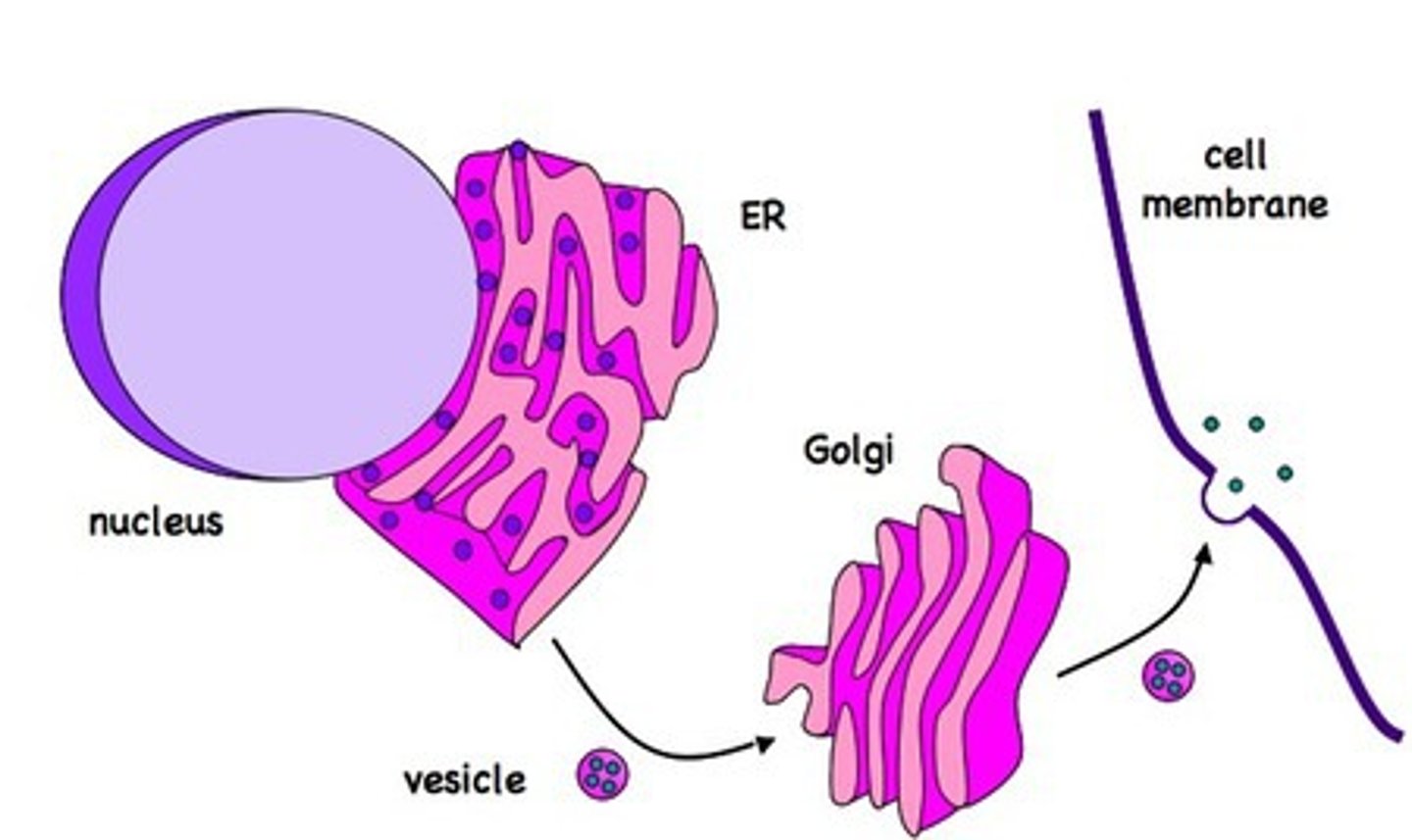
Mitochondria structure
Consists of a double membrane, creating an inner membrane(folded), outer membrane, an intermembrane space, the matrix, and cristae
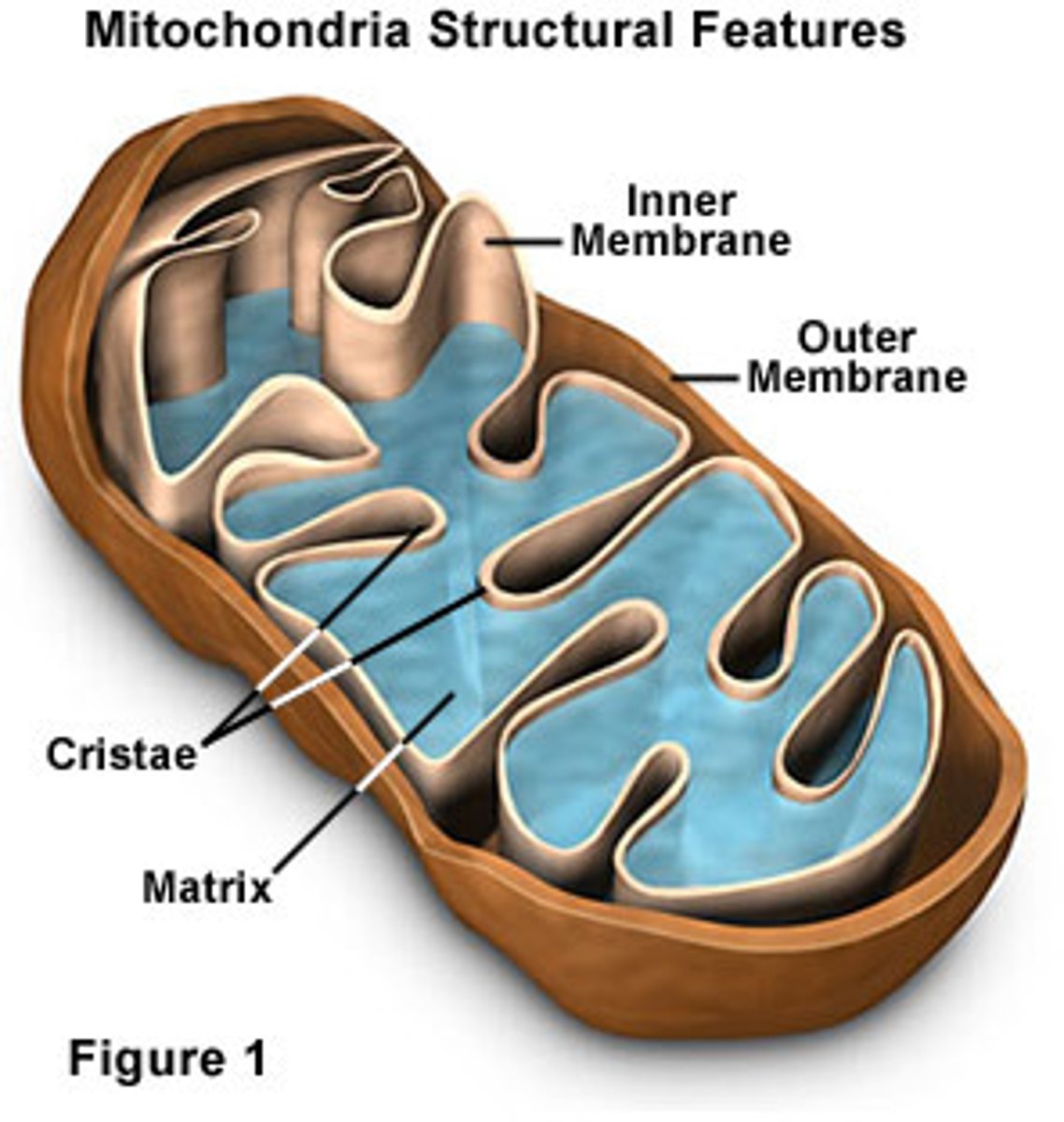
Mitochondria function
ATP(Adenosine Triphosphate) production
Lysosome structure
Membrane enclosed sacs containing hydrolytic enzymes

Lysosome function
Hydrolytic enzymes within the lysosome digest materials(damaged cell plants, macromolecules)
Metabolic reactions of the Mitochondria +Locations
1. Krebs cycle/citric acid cycle- matrix
2. ETC(Electron Transport Chain) +ATP synthesis- inner mitochondrial membrane
Mitochondria membrane folding of inner membrane effect
increases the surface area, allowing more absorption +ATP production
Chloroplast structure
Plant cells ONLY
1. Thylakoid
2.Membranes
3.Stroma
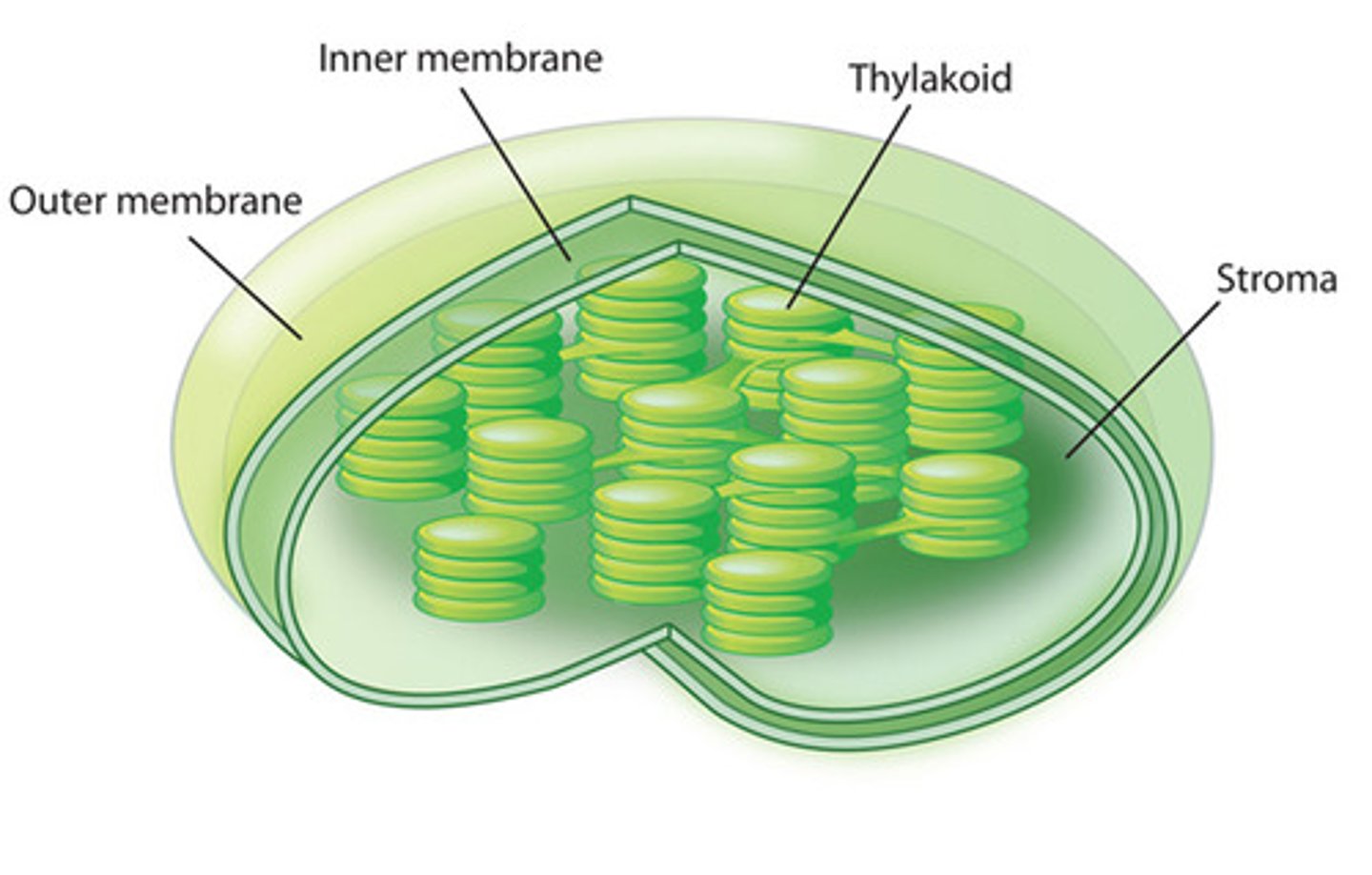
Thylakoid
highly folded membrane compartments organized into stacks(stacks=grana/granum)
Chloroplast Membranes
Contain Chlorophyll pigments for photosynthesis
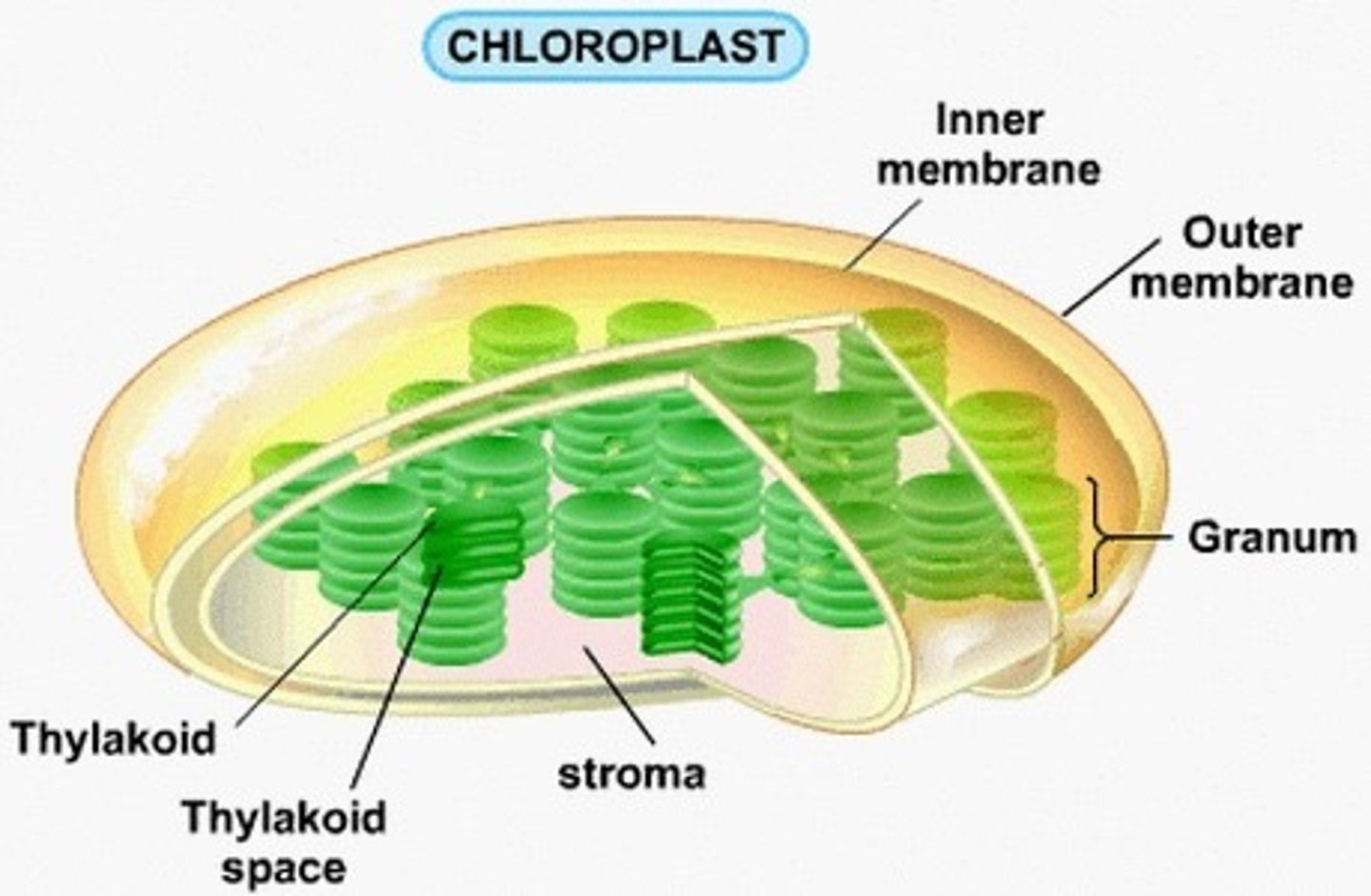
Thylakoid membrane function
ETC proteins found within photosystems 1 and 2
Stroma structure + function
Fluid filled between the inner membrane and thylakoids-> carbon fixation occurs
Lysosomes 3 specific roles
1. Intracellular digestion
2. Recycling of organic materials
3. Programmed cell death=apoptosis
Turgor pressure
plant cells ONLY- the internal cellular force caused by water within the vacuole pushing on the plasma membrane + cell wall.
ex. Wilting plants- no turgor pressure
Typical cell size + why
SMALL CELLS- smaller the cells are, the more absorption of materials
SA/V ratio: needs to be high SA/V ratio
Purpose of Membrane folding
to increase surface area
ex. 1-Villi and microvilli on small intestine
ex.2-Root hairs on plant roots
Passive transport
The movement of solutes across the cell membrane from high to low concentration with NO USE of energy.
Diffusion
Movement of molecules from an area of higher concentration to an area of lower concentration.
Facilitated diffusion
The movement of molecules from an area of high concentration to low concentration with the help of a protein channel using NO energy.
Facilitated diffusion structures involved (2)
Protein channel- ; carrier protein- form pores along the membrane, allowing the membrane to move down
What molecules move across the cell membrane
SMALL, NON-POLAR molecules
Active transport
The movement of molecules from low to high concentration USING energy.
Co-transport
The transport of one substance coupled with the transport of another substance in the same direction through the same protein carrier.
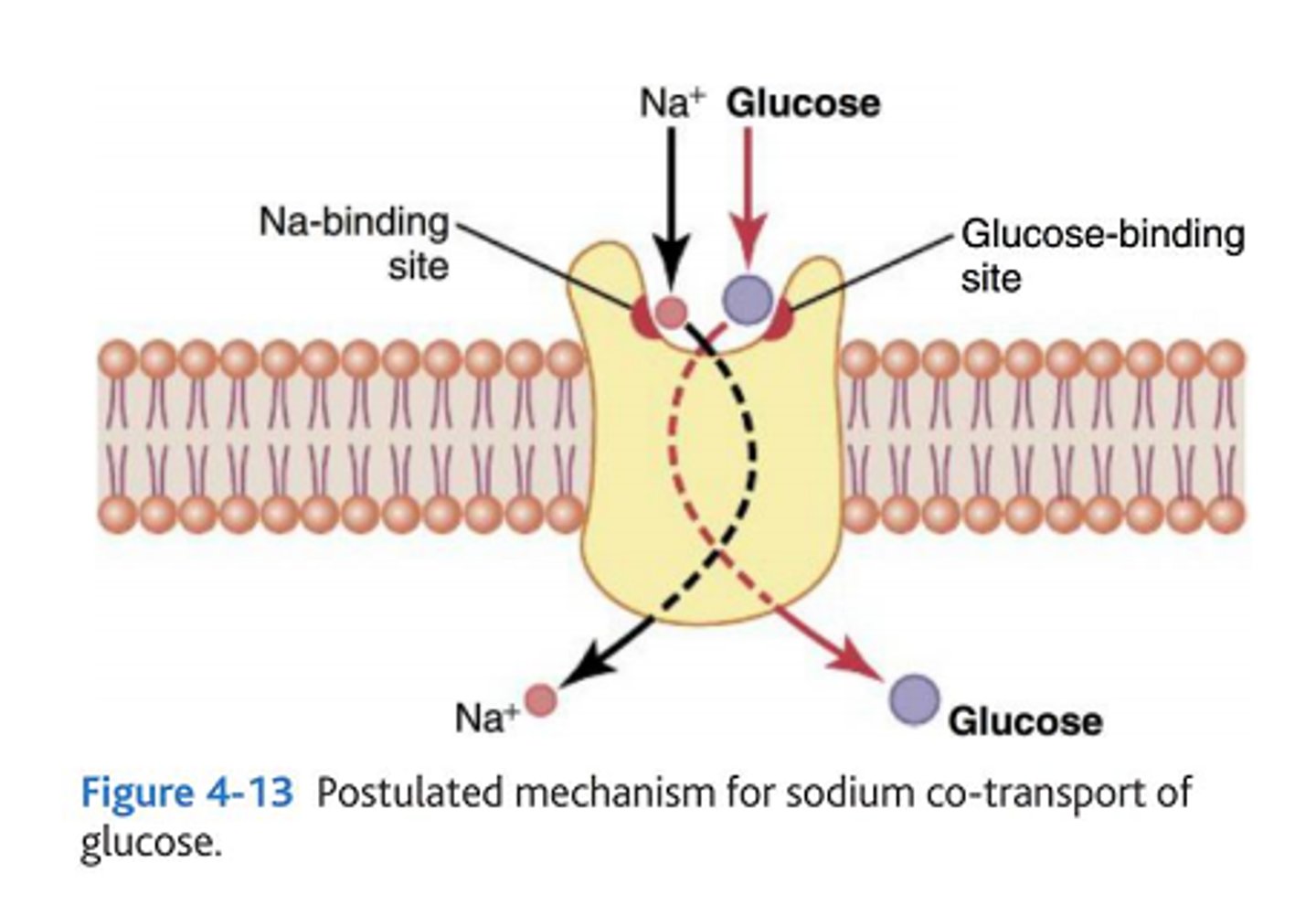
Polarized membranes
Caused by an uneven distribution of charged molecules inside and outside the cell, with inside the cell being typically negative and the outside of the cell being typically positive.
electrochemical gradient
A difference in electrical charge inside and outside the cell, causing ions to move from an area to a high charge to a low charge.
Endocytosis
A process in which a cell engulfs extracellular material through an inward folding of its plasma membrane using a vesicle into the cell.
Exocytosis
a process by which the contents of a cell vacuole are released to the exterior through fusion of the vacuole membrane with the cell membrane.
Types of endocytosis(3)
Phagocytosis- large particles
Pinocytosis- extracellular fluid
Receptor-mediated- receptor proteins catch specific target molecules.
Osmosis
The passive movement of water across the cell membrane
Osmolarity
The total solute concentration(Moles)
Tonicity
The measurement of the relative concentrations of solute between inside and outside the cell.
hypertonic solution v.s cell environment
If the cell is in a hypertonic solution, water flows outside the cell into the solution.
hypotonic solution v.s cell environment
If the cell is in a hypotonic solution, water flows inside the cell from the solution
isotonic solution v.s cell environment
If the cell is in an isotonic solution, no water movement will occur.
Osmoregulation
regulation of solute concentrations and water balance by a cell or organism.
Plasmolysis
Contraction of a plant cell due to a loss of water; caused by a plant cell in a hypertonic environment
Flaccid
A limp plant cell with no turgor pressure; caused by a plant cell in an isotonic environment.
Turgid
A firm plant cell with turgor pressure; caused by a plant cell in an hypotonic environment(ideal)
Animal cell in an hypertonic solution
Cell shrivels
Animal cell in an isotonic solution
Normal, has equal solute and water and is the ideal solution animal cells want to be in.
Animal cell in a hypotonic solution
Lysed, more cellular solute and less cellular waste.
How vacuoles osmoregulate
Can take in water via osmosis, OR can pump out water using contractile vacuoles.
Cell compartmentalization
Cell membrane properties
- Fluid mosaic model
- allows cell growth
- selective permeability to small, nonpolar molecules
Aquaporin
A protein that facilitates the diffusion of water across a membrane.
water potential
Measure of potential energy in water that drives the movement of water across a membrane
Water flows to what water potential?
Water will flow to a LOWER WATER potential.
Hypotonic solution with water potential
Has HIGH water potential because MORE free water.
Hypertonic solution with water potential
Has LOW water potential because LESS free water.
Isotonic solution with water potential
Has 0 water potential because equal pressure potential.
Water potential equation + variables
Ψ = Ψs + Ψp
Ψ- Water potential
Ψs- Solute potential
Ψp- Pressure potential
solute potential equation
Ψs = -iCRT
-i- ionization constant(given)
C- Molar concentration(mol)
R- Pressure concentration(.0831 L/bars/mol/K)
T- Temperature in Kelvin(273+ Celsius)
sodium-potassium pump
a carrier protein that uses ATP to actively transport sodium ions out of a cell and potassium ions into the cell. (animal cells)
Electrogenic pump
An active transport protein that generates voltage across a membrane while pumping ions.
Proton pump
An active transport protein in a cell membrane that uses ATP to transport hydrogen ions out of a cell against their concentration gradient.